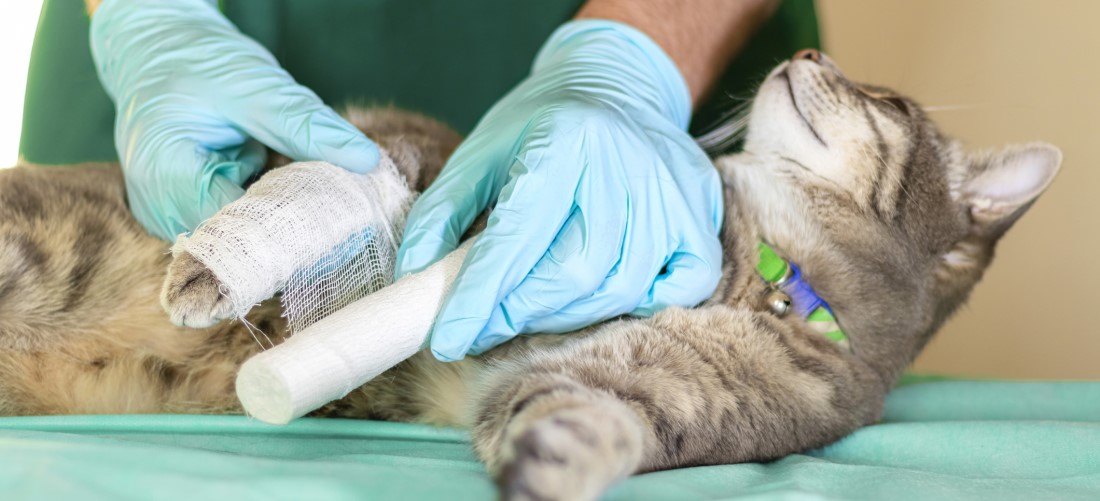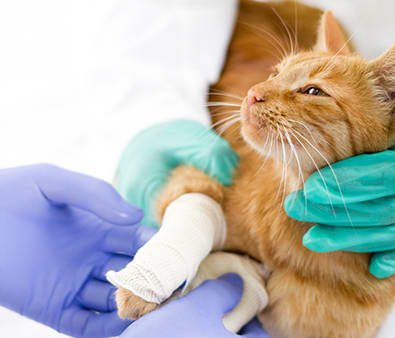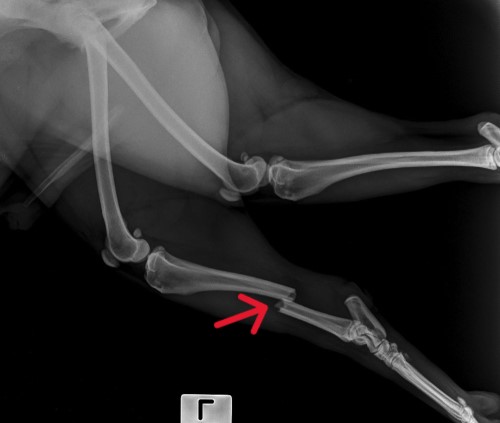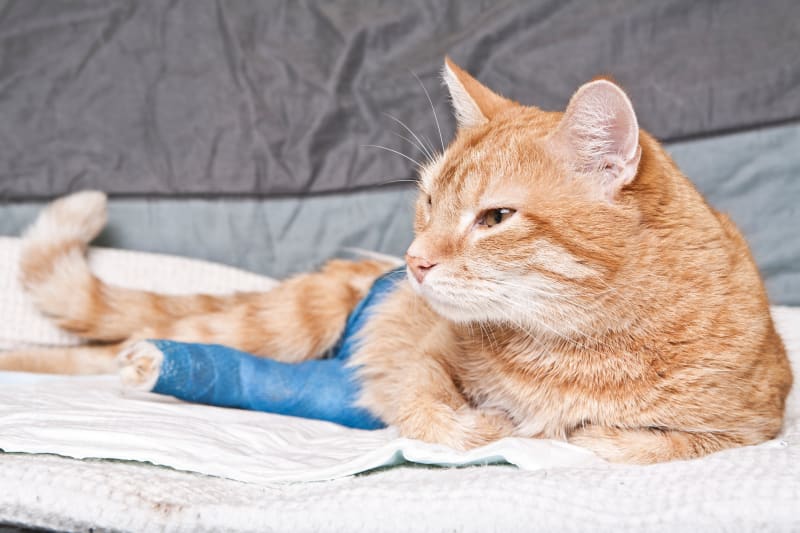Broken Bones in Cats

Understanding Simple Fractures in Cats
A simple fracture occurs when there is a break in the bone or cartilage with minimal displacement. The bone splits into two fragments. When multiple fragments are involved, it is referred to as a “comminuted” fracture. Young animals, especially, are prone to simple fractures.
These fractures often result from minor traumas, such as being stepped on or falling awkwardly. Cats lacking proper nutrition may also be more vulnerable since poor bone quality can lead to fractures from less severe injuries.
In older cats, simple or spiral fractures resulting from minimal trauma can indicate underlying bone weakness, possibly due to conditions like tumors.
Simple fractures might cause slight soft tissue swelling at the fracture site. They can result in non-weight-bearing lameness, or in some cases, no noticeable lameness at all. If untreated, the bone may heal incorrectly or not heal at all. It is important to identify and address any underlying conditions that could contribute to the risk of future fractures.
Symptoms of Broken Bones to Look For

- Lameness
- Swelling in the limb following a minor injury
How Vets Diagnose Fractures in Cats

A history of trauma might not always be apparent, so veterinarians will ask detailed questions regarding the circumstances surrounding the injury. Questions may also cover dietary habits and the use of supplements.
Although fractures might come with swelling and pain, signs like instability or crunchiness during palpation are usually uncommon. A cat may not bear weight on the affected leg, but in cases of certain pelvic fractures, a cat may use the leg normally.
Most cats with simple fractures do not have life-threatening injuries and are stable upon examination. Diagnostic measures may include:
- Radiographs. X-rays are the standard method to confirm fractures. They can sometimes show clear fractures, but in other cases, they may be subtle. Vets may X-ray the normal side for comparison.
- Blood tests. While there are no specific tests for fractures, blood work may be done before anesthesia to check for underlying issues.
Treatment Options for Broken Bones in Cats

- Casts and splints are often the most practical and cost-effective methods to stabilize simple fractures in the lower limbs. Earlier plaster casts have been largely replaced by fiberglass which molds to the leg’s shape and hardens to provide support. Various splints can also be applied for partial support without enveloping the entire limb.
- While casts restrict limb movement, they must stabilize joints above and below the fracture to prevent movement of the fragments. Therefore, casting is typically limited to the lower limbs.
- For fractures higher in the leg, internal fixation methods—using pins, wires, or plates—might be employed through surgical intervention.
- Pain relief is essential, and injectable analgesics might be administered in a veterinary setting and continued with oral medications post-discharge.
- In young, healthy cats with minimally displaced fractures, a period of strict cage rest for a few weeks might suffice for healing.
Caring for Your Cat Post-Injury and Prevention Tips
If your cat is in a cast or splint, daily checks for swelling or signs of rubbing are essential. The cast or splint must remain clean and dry and may require regular inspection or changes to avoid pressure sores, particularly at the elbow and knee regions.
For open fractures that have been surgically repaired, monitoring the incision site for swelling, redness, or discharge is vital. Stitches or staples typically need to be removed within 10 to 14 days.
Rest is crucial for healing. Younger cats may require two to four weeks while older cats may take six to twelve weeks or more, depending on the fracture’s severity.
Follow-up X-rays will be necessary to confirm proper healing and monitor any implants.
Finally, adjusting your cat’s diet to ensure it is nutritionally balanced is important. Consult your veterinarian to create a healthy diet plan, which will promote good bone quality and help prevent future fractures.
Finally, adjusting your cat’s diet to ensure it is nutritionally balanced is important. Consult your veterinarian to create a healthy diet plan, which will promote good bone quality and help prevent future fractures.
